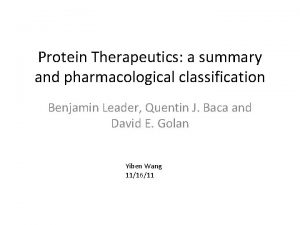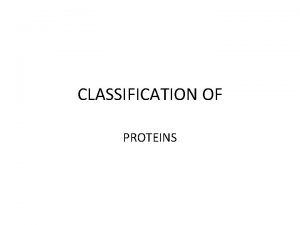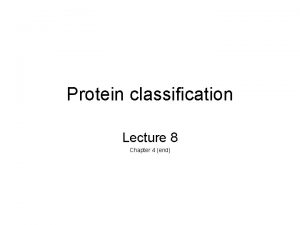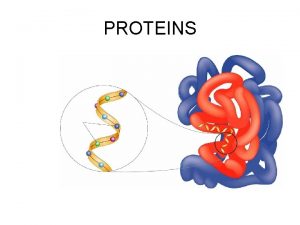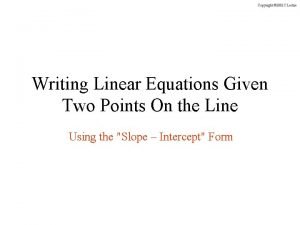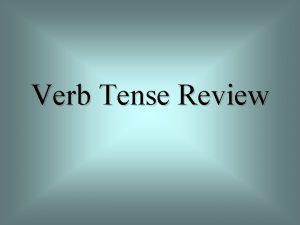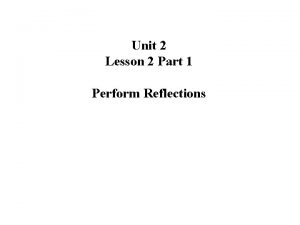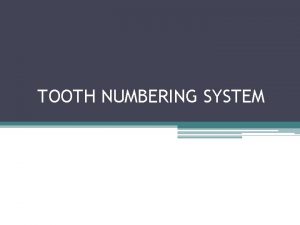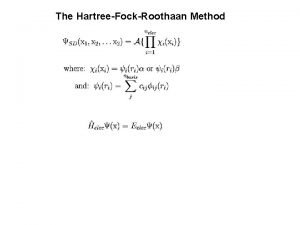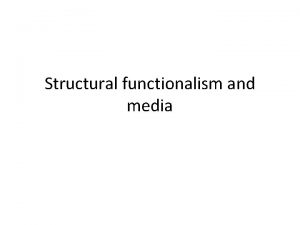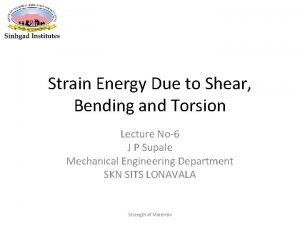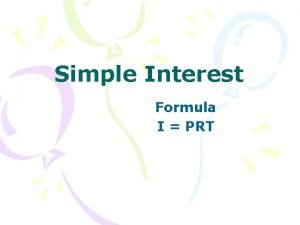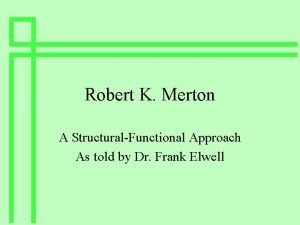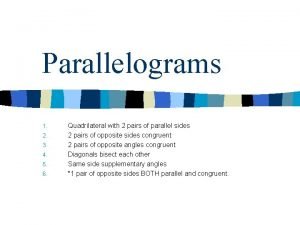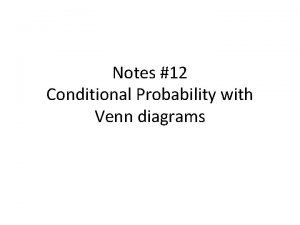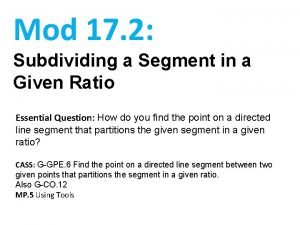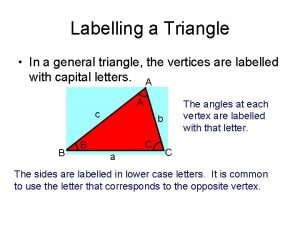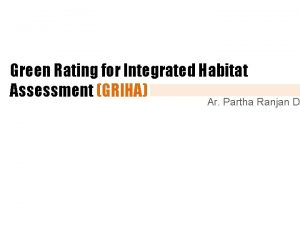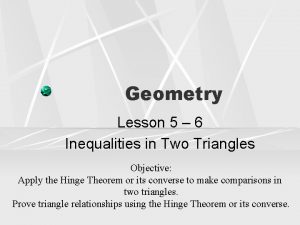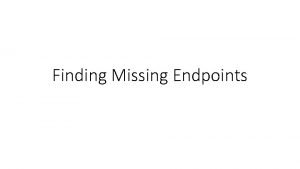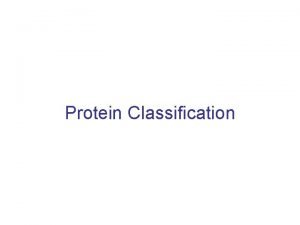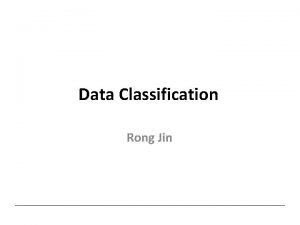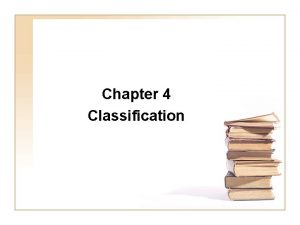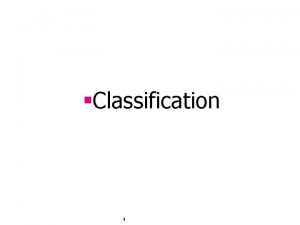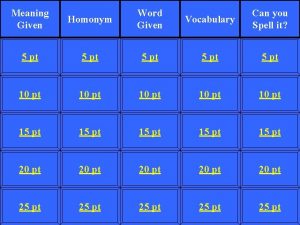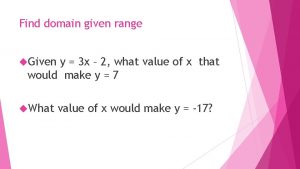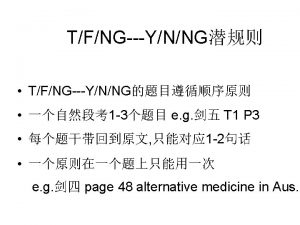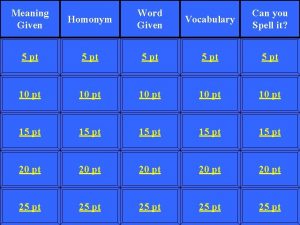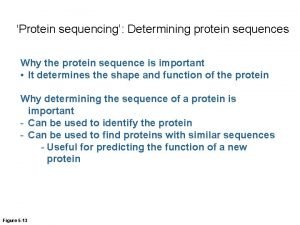Protein Classification Protein Classification Given a new protein
















































- Slides: 48

Protein Classification

Protein Classification • Given a new protein, can we place it in its “correct” position within an existing protein hierarchy? Fold Methods • BLAST / Psi. BLAST new protein Superfamily ? Family • Profile HMMs • Supervised Machine Learning methods Proteins

PSI-BLAST Given a sequence query x, and database D 1. 2. 3. Find all pairwise alignments of x to sequences in D Collect all matches of x to y with some minimum significance Construct position specific matrix M • 4. 5. Each sequence y is given a weight so that many similar sequences cannot have much influence on a position (Henikoff & Henikoff 1994) Using the matrix M, search D for more matches Iterate 1– 4 until convergence Profile M

Classification with Profile HMMs Fold D 1 Superfamily BEGIN I 0 Dm-1 D 2 I 1 M 1 Dm Im-1 END Im Mm M 2 Family new protein ? D 1 BEGIN I 0 D 2 I 1 M 1 Dm-1 Dm Im-1 M 2 D 1 Im Mm END BEGIN I 0 D 2 I 1 M 1 Dm-1 Dm Im-1 M 2 Im Mm END

The Fisher Kernel • Fisher score § UX = log P(X | H 1, ) § Quantifies how each parameter contributes to generating X § For two different sequences X and Y, can compare UX, UY • D 2 F(X, Y) = ½ 2 |UX – UY|2 • Given this distance function, K(X, Y) is defined as a similarity measure: § K(X, Y) = exp(-D 2 F(X, Y)) § Set so that the average distance of training sequences Xi H 1 to sequences Xj H 0 is 1 D 1 BEGIN I 0 D 2 I 1 M 1 Dm-1 Dm Im-1 M 2 Im Mm END

The Fisher Kernel • To train a classifier for a given family H 1, 1. 2. 3. 4. 5. 6. Build profile HMM, H 1 UX = log P(X | H 1, ) D 2 F(X, Y) = ½ 2 |UX – UY|2 K(X, Y) = exp(-D 2 F(X, Y)), L(X) = Xi H 1 i K(X, Xi) – Xj H 0 j K(X, Xj) Iteratively adjust to optimize J( ) = Xi H 1 i(2 - L(Xi)) – • (Fisher score) (distance) (akin to dot product) Xj H 0 j(2 + L(Xj)) To classify query X, § § § Compute UX Compute K(X, Xi) for all training examples Xi with I ≠ 0 Decide based on L(X) >? 0 (few)

O. Jangmin


QUESTION Running time of Fisher kernel SVM on query X?

k-mer based SVMs Leslie, Eskin, Weston, Noble; NIPS 2002 Highlights • K(X, Y) = exp(-½ 2 |UX – UY|2), requires expensive profile alignment: UX = log P(X | H 1, ) – O(|X| |H 1|) • Instead, new kernel K(X, Y) just “counts up” k-mers with mismatches in common between X and Y – O(|X|) in practice • Off-the-shelf SVM software used

k-mer based SVMs • For given word size k, and mismatch tolerance l, define K(X, Y) = # distinct k-long word occurrences with ≤ l mismatches • Define normalized kernel K’(X, Y) = K(X, Y)/ sqrt(K(X, X)K(Y, Y)) • SVM can be learned by supplying this kernel function X ABACARDI K(X, Y) = 4 Let k = 3; l = 1 K’(X, Y) = 4/sqrt(7*7) = 4/7 Y ABRADABI

SVMs will find a few support vectors After training, SVM has determined a small set of sequences, the support vectors, who need to be compared with query sequence X v

Benchmarks

Semi-Supervised Methods GENERATIVE SUPERVISED METHODS

Semi-Supervised Methods DISCRIMINATIVE SUPERVISED METHODS

Semi-Supervised Methods UNSUPERVISED METHODS Mixture of Centers Data generated by a fixed set of centers (how many? )

Semi-Supervised Methods UNSUPERVISED METHODS Mixture of Centers Data generated by a fixed set of centers (how many? )

Semi-Supervised Methods UNSUPERVISED METHODS Mixture of Centers Data generated by a fixed set of centers (how many? )

Semi-Supervised Methods UNSUPERVISED METHODS Mixture of Centers Data generated by a fixed set of centers (how many? )

Semi-Supervised Methods UNSUPERVISED METHODS Mixture of Centers Data generated by a fixed set of centers (how many? )

Semi-Supervised Methods UNSUPERVISED METHODS Mixture of Centers Data generated by a fixed set of centers (how many? )

Semi-Supervised Methods UNSUPERVISED METHODS Mixture of Centers Data generated by a fixed set of centers (how many? )

Semi-Supervised Methods UNSUPERVISED METHODS Mixture of Centers Data generated by a fixed set of centers (how many? )

Semi-Supervised Methods UNSUPERVISED METHODS Mixture of Centers Data generated by a fixed set of centers (how many? )

Semi-Supervised Methods UNSUPERVISED METHODS Mixture of Centers Data generated by a fixed set of centers (how many? )

Semi-Supervised Methods • Some examples are labeled • Assume labels vary smoothly among all examples

Semi-Supervised Methods • Some examples are labeled • Assume labels vary smoothly among all examples • SVMs and other discriminative methods may make significant mistakes due to lack of data

Semi-Supervised Methods • Some examples are labeled • Assume labels vary smoothly among all examples

Semi-Supervised Methods • Some examples are labeled • Assume labels vary smoothly among all examples

Semi-Supervised Methods • Some examples are labeled • Assume labels vary smoothly among all examples

Semi-Supervised Methods • Some examples are labeled • Assume labels vary smoothly among all examples Attempt to “contract” the distances within each cluster while keeping intracluster distances larger

Semi-Supervised Methods • Some examples are labeled • Assume labels vary smoothly among all examples

Semi-Supervised Methods 1. Kuang, Ie, Wang, Siddiqi, Freund, Leslie 2005 § 2. A Psi-BLAST profile—based method Weston, Leslie, Elisseeff, Noble, NIPS 2003 § Cluster kernels

(semi)1. Profile k-mer based SVMs PSI-BLAST Profile M • For each sequence X, § Obtain PSI-BLAST profile Q(X) = {pi( ); : amino acid, 1≤ i ≤ |X|} § For every k-mer in X, xj … xj+k-1, define -neighborhood Mk, (Q[xj…xj+k-1]) = {b 1…bk | - i=0…k-1 log pj+i(bi) < } § Define K(X, Y) For each b 1…bk matching m times in X, n times in Y, add m*n • In practice, each k-mer can have ≤ 2 mismatches and K(X, Y) can be computed quickly in O(k 2 202 (|X| + |Y|))

(semi)1. • Discriminative motifs According to this kernel K(X, Y), sequence X is mapped to Φk, (X): vector in 20 k dimensions § • Then, SVM learns a discriminating “hyperplane” with normal vector v: § • v= i=1…N (+/-) i Φ k, (X (i)) Consider a profile k-mer Q[xj…xj+k-1]; its contribution to v is ~ § • Φk, (X)(b 1…bk) = # k-mers in Q(X) whose neighborhood includes b 1…bk Φk, (Q[xj…xj+k-1]), v Consider a position i in X: count up the contributions of all words containing xi § g(xi) = j=1…k max{ 0, Φk, (Q[xi-k+j…xj-1+j]), v } § Sort these contributions within all positions of all sequences, to pick important positions or discriminative motifs

(semi)1. • Discriminative motifs Consider a position i in X: count up the contributions to v of all words containing xi § Sort these contributions within all positions of all sequences, to pick discriminative motifs

(semi)2. • Cluster Kernels Two (more!) methods 1. Neighborhood 1. For each X, run PSI-BLAST to get similar seqs Nbd(X) 2. Define Φnbd(X) = 1/|Nbd(X)| X’ Nbd(X) Φoriginal(X’) “Counts of all k-mers matching with at most 1 diff. all sequences that are similar to X” 3. Knbd(X, Y) = 1/(|Nbd(X)|*|Nbd(Y)) X’ Nbd(X) Y’ Nbd(Y) K(X’, Y’) 2. Bagged mismatch

(semi)2. • Cluster Kernels Two (more!) methods 1. 2. Neighborhood 1. For each X, run PSI-BLAST to get similar seqs Nbd(X) 2. Define Φnbd(X) = 1/|Nbd(X)| X’ Nbd(X) Φoriginal(X’) “Counts of all k-mers matching with at most 1 diff. all sequences that are similar to X” 3. Knbd(X, Y) = 1/(|Nbd(X)|*|Nbd(Y)) X’ Nbd(X) Y’ Nbd(Y) K(X’, Y’) Bagged mismatch 4. Run k-means clustering n times, giving p = 1, …, n assignments cp(X) 5. For every X and Y, count up the fraction of times they are bagged together Kbag(X, Y) = 1/n p 1(cp(X) = cp (Y)) 6. Combine the “bag fraction” with the original comparison K(. , . ) Knew(X, Y) = Kbag(X, Y) K(X, Y)

Some Benchmarks

Google-like homology search • The internet and the network of protein homologies have some similarity—scale free • Given query X, Google ranks webpages by a flow algorithm § From each webpage W, linked nbrs receive flow § At time t+1, W sends to nbrs flow it received at time t § Finite, ergodic, aperiodic Markov Chain § Can find stationary distribution efficiently as left eigenvector with eigenvalue 1 • Start with arbitrary probability distribution, and multiply by the transition matrix

Google-like homology search Weston, Elisseeff, Zhu, Leslie, Noble, PNAS 2004 RANKPROP algorithm for protein homology • First, compute a matrix Kij of PSI-BLAST homology between proteins i and j, normalized so that j. Kji = 1 1. 2. 3. 4. Initialization y 1(0) = 1; yi(0) = 0 For t = 0, 1, …, For i = 2 to m yi(t+1) = K 1 i + Kjiyj(t) In the end, let yi be the ranking score for similarity of sequence i to sequence 1 ( = 0. 95 is good)

Google-like homology search For a given protein family, what fraction of true members of the family are ranked higher than the first 50 non-members?

Protein Structure Prediction

Protein Structure Determination • Experimental § X-ray crystallography § NMR spectrometry • Computational – Structure Prediction (The Holy Grail) Sequence implies structure, therefore in principle we can predict the structure from the sequence alone

Protein Structure Prediction • ab initio § Use just first principles: energy, geometry, and kinematics • Homology § Find the best match to a database of sequences with known 3 Dstructure • Threading • Meta-servers and other methods

Ab initio Prediction • Sampling the global conformation space § Lattice models / Discrete-state models § Molecular Dynamics • Picking native conformations with an energy function § Solvation model: how protein interacts with water § Pair interactions between amino acids • Predicting secondary structure § Local homology § Fragment libraries

Lattice String Folding • HP model: main modeled force is hydrophobic attraction § NP-hard in both 2 -D square and 3 -D cubic § Constant approximation algorithms § Not so relevant biologically

Lattice String Folding
 Channel vs carrier proteins
Channel vs carrier proteins Protein-protein docking
Protein-protein docking Benjamin classification
Benjamin classification Functional classification of protein
Functional classification of protein Protein definition and classification
Protein definition and classification Monomer of proteins
Monomer of proteins Punctuating split speech
Punctuating split speech New york, new jersey, pennsylvania, and delaware
New york, new jersey, pennsylvania, and delaware Fresh oil new wine
Fresh oil new wine Orchard 14 new hartford
Orchard 14 new hartford Both new hampshire and new york desire more territory
Both new hampshire and new york desire more territory New-old approach to creating new ventures
New-old approach to creating new ventures What forces are defining the new marketing realities
What forces are defining the new marketing realities New years old is new again
New years old is new again New classical macroeconomics
New classical macroeconomics Chapter 16 toward a new heaven and a new earth
Chapter 16 toward a new heaven and a new earth Leanne keene french ambassador arrives from paris
Leanne keene french ambassador arrives from paris New classical and new keynesian macroeconomics
New classical and new keynesian macroeconomics Roosevelt vs taft venn diagram
Roosevelt vs taft venn diagram New york hf classification
New york hf classification Yashpal committee report on higher education
Yashpal committee report on higher education How to find the y intercept with two points
How to find the y intercept with two points The exclusive legal right given to an originator
The exclusive legal right given to an originator Mary had given me tony's address before she left
Mary had given me tony's address before she left Given that venn diagram
Given that venn diagram Directed line segment math definition
Directed line segment math definition Reflections lesson 2-2
Reflections lesson 2-2 Fdi dental formula
Fdi dental formula Hagen's theory of status withdrawal
Hagen's theory of status withdrawal Variational principle
Variational principle Functionalism in media
Functionalism in media Strain energy in torsion
Strain energy in torsion Relevant and irrelevant sentences
Relevant and irrelevant sentences Given the formula i=prt
Given the formula i=prt Merton
Merton Position vector form
Position vector form Gui for metasploit
Gui for metasploit Complete the gaps with the past simple
Complete the gaps with the past simple Characteristics of parallelogram
Characteristics of parallelogram Projection of lines problems with solutions
Projection of lines problems with solutions Compliance with commands given by an authority figure
Compliance with commands given by an authority figure What does a n b mean in venn diagrams
What does a n b mean in venn diagrams Subdividing a segment in a given ratio
Subdividing a segment in a given ratio Finding length of triangle using angles
Finding length of triangle using angles Javier junquera
Javier junquera Which rating star is given by griha for points 71-80
Which rating star is given by griha for points 71-80 5-6 inequalities in two triangles worksheet answers
5-6 inequalities in two triangles worksheet answers Immediate, temporary care to an injured person
Immediate, temporary care to an injured person Find coordinates of missing endpoint
Find coordinates of missing endpoint


